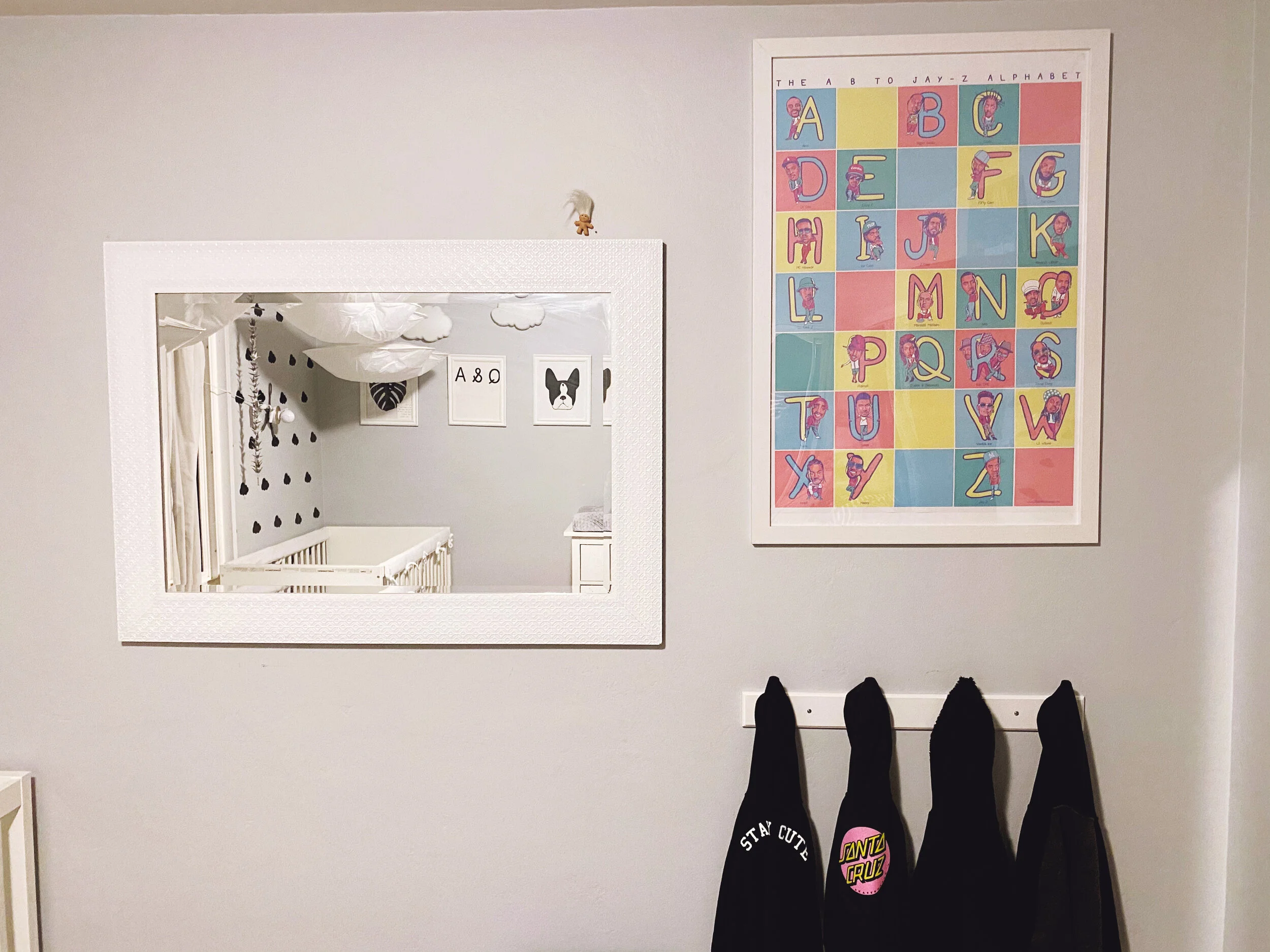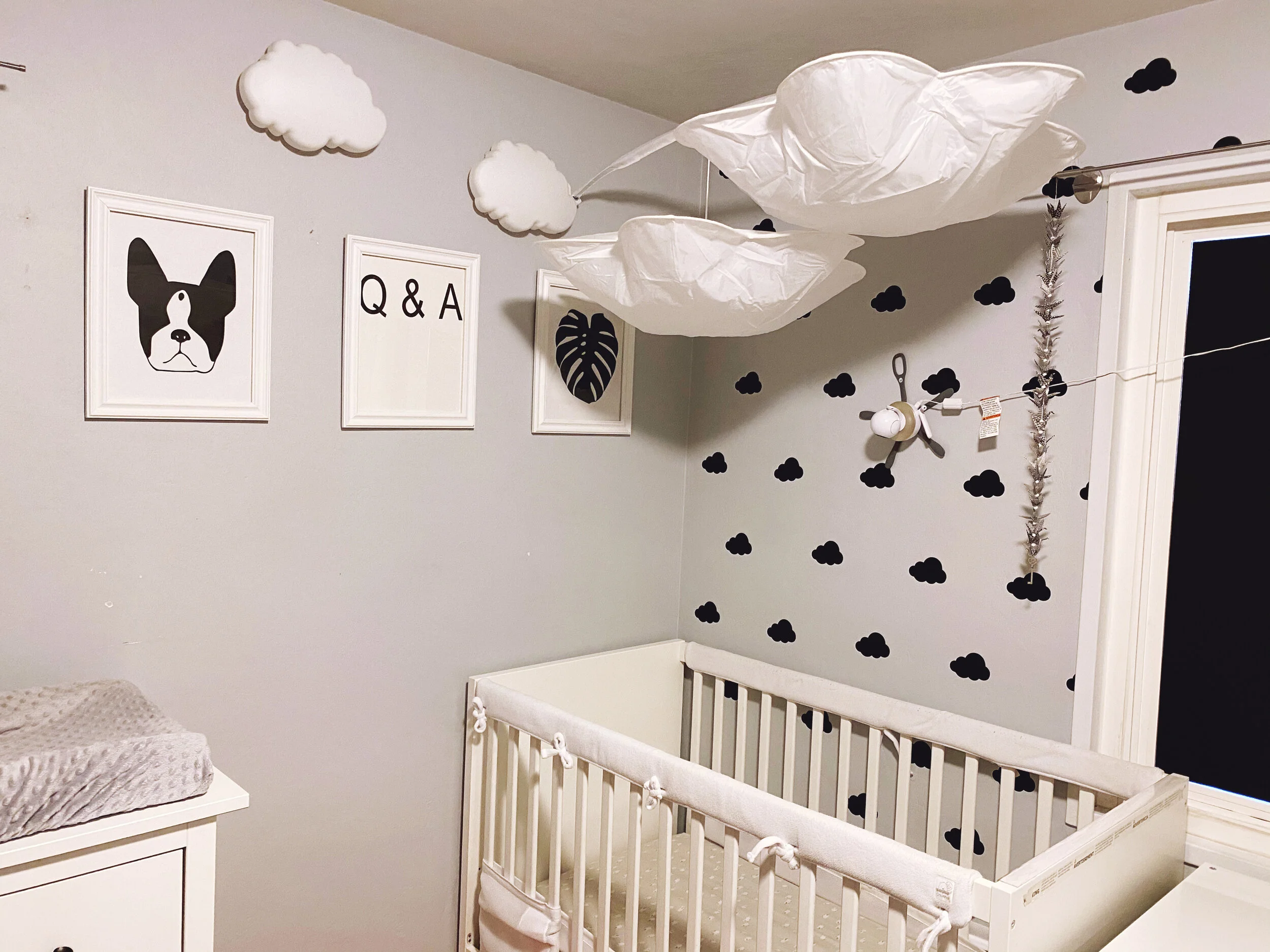Establishing a Routine for 0-6 month olds
Disclaimer: I am not a doctor or a sleep or baby expert, just a mama who found this method to work well with both of my children. I have shared this method with friends and family who also reported great success – and went on to share it with their friends and family! Everyone is different. Our main goal in life is sleep through the night. Following this method with help you achieve that goal faster.
If you’re reading this, you might be at your wits’ end. I know I was before establishing a routine for myself and my new baby.
I just knew a quiet baby was a happy baby, so my husband and I did anything and everything we could to make that baby happy! That method is fine and great. But as time goes on, that sweet little baby is going to have you so tightly wrapped around their finger that you won’t know which way is up. Maybe you’re there now. So how do you get back on track?
First, you have to commit. This is all about consistency!
Next, write down a realistic schedule that works for your family and lifestyle. Example: I am a morning person, so I’m usually ready to go and have planned how to take over the world at 7 AM when my kids get up. Whether you’re an early bird or a night owl, writing your schedule down is key! Get those highlighters out and make it cute. You got this! :) Here’s a cute free printable to make this 1% more fun lol!
Okay side note: Can you believe that tiny but HUGE baby just came out of you?! Or maybe you’re just welcoming a beautiful baby home through adoption, and can’t believe you are the person in charge. Don’t worry, none of us know what we’re doing. You just do it.
So first things first, enjoy that perfect little ball of joy and demand-feed that precious babe for the next 4-6 weeks.
Once you have reached that glorious first month (hi, you made it!), you can start to add a little routine to your daily schedule. Start by feeding that precious baby every 2.5-3 hours. This is going to be a little complicated at first if you have a starving babe who wants to eat 24/7 (hello Atlas, my second born). Doing this will help with longer stretches of sleep, eventually resulting in sleeping through the night. All our main goal!
Your routine should look something like this:
Eat/Wake/Sleep ALWAYS. *Cue eye roll.*
Do whatever you want, but you and I both know this is the key to the holy grail of sleep and routine. Of course it can’t be the easy way, nursing baby to sleep. No, it can’t be the cozy cuddling, rocking, sweet smell, “perfect” sleep we all dream of. It’s the annoying “fall asleep on your own” technique. It’s the worst. But the sooner you start it, the better off you will be. Isn’t that the most annoying thing to hear as a mom?
The eat/wake/sleep sequence explained a bit more:
“Eat” means upon your baby waking up, you should feed them right away. You want to keep them 100% awake from beginning to end of feeding. If your baby is really fresh, this will be hard, but try your best!
“Wake” is a term for the time your baby spends being awake. Once your baby is done eating, you want to keep your baby awake until it’s time to sleep again (anywhere from 30 minutes to 2 hours depending on age).
“Sleep” happens when it’s time to put them down for nap or bedtime. The goal here is to have them fall asleep in any way that does NOT include eating. It’s important to stick to this pattern of eat/wake/sleep, so that your baby doesn’t get into the habit of eating to fall asleep.
Side note: You’re in charge! If your baby is giving you hunger cues and is upset, feed them. You know what’s best.
Example schedule: 4-12 weeks
7:00 AM Wake, eat, wake/play time, nap
example: (wake up, change diaper, feed, sing songs/walk around house until showing sleep signs about 8:45 to nap till 10)
10:00 AM Wake eat, wake/play time, nap
1:00 PM Wake eat, wake/play time, nap
4:00 PM Wake eat, wake/play time, nap
7:00 PM Wake eat, wake/play time, catnap
10:00 PM Eat, down for the night
Example Schedule: +12 weeks
7:00 AM Wake, eat, wake/playtime, nap
example: (wake, change diaper, feed, lay on play mat/read a book nap around 9-11ish)
11;00 AM Wake eat, wake/play time nap
(nap usually around 2 to make it to 4:00)
4:00 PM Wake, eat, wake/playtime
Bedtime Routine and in bed by 7:00 PM
Wake & Play Time
This is the time your baby spends being wide awake. This time is extremely important throughout your day!
In the beginning, awake & play time can be very difficult. Newborns love to sleep. They want to sleep while eating and sometimes sleep ‘til their next feeding! This is normal. I would usually change their diaper or their clothes to get them moving after eating. Aim for 15-30 minutes of awake time for 4-6 week olds. Then lengthen that time as they get older until you reach about 1-1.5 hours of awake time.
Our goal is to have our 3-hour window be 1.5 hours of wake time + 1.5 hours of nap. Once your baby is older than 12 weeks, you can aim for longer awake times, around two hours. This takes time, so don’t worry!
Wake time ideas for newborn:
Change diaper
Lay on blanket on floor
Look out window at trees & cars
Change clothes
Sing a song
Read a book
Play with blocks
After 4-6 days of following this schedule consistently, you will see your baby’s nighttime sleep improve drastically and notice your baby is sleeping in longer stretches. The most important wake window is the last of the day, from 7-10 PM. The nap in that last wake time is more of a catnap (15-30 minutes). This way, your baby can make it to their next feeding but is sleepy enough to stay asleep for the night. Yes, they will probably be cranky. But doing this will help them sleep longer through the night.
The goal is to establish six feedings a day, three hours apart, and to have some awake time between feeding and naps. Around twelve weeks, you will move to four feedings a day. This can be a major transition, so stay calm! Slowly start to push the first two feedings by 10-15 minutes per day until they are 4 hours apart. I have found that once I established one of the 4 hour feedings, the others quickly fall into place.
Early Bedtime
Around 10-12 weeks, you will want to start moving your baby’s bedtime to be 12 hours after their morning wake time. Our wake time is 7 AM, so we go to bed at 7 PM. If your kids sleep ‘til 8 AM, their bedtime should be 8 PM. Some people think if you keep babies up later, they will sleep in later, but that’s not usually the case.
How do you move bedtime from 10 PM to 7 PM?
Once you decide it’s time for an earlier bedtime, you can start by changing your 10 PM feeding. Instead of 10 PM, move it to 9:45, then to 9:30 and so on, until you reach 7 PM. This can get confusing, but just keep doing it. I promise it works! The two nighttime feedings will become one. (AKA dinner). My kids both get nighttime snacks. This might not be for everyone, but sometimes I need a snack before bed too. So I get it. :)
Nap time is a sacred time in our house. Yes, it is annoying to have to leave an event early or show up late due to nap time. But look at it as a break for some YOU time – time promised to YOU every day. And 99% of the time you will have happy, refreshed kids to take on the second half of the day! Going by a schedule will also help you plan your weekly activities smoothly. Babies thrive on a schedule, and both you and your baby will be happy knowing what to expect each day.
I hope this helps you find a little peace throughout your crazy day! Feel free to ask any questions or share your routines below.
Always + Whatever
xo
Ale
Links from my pictures above: Black Espadrille Platform Sandals, Milk Monster Onesie , Over Hang Clouds, Cloud Lights Rapper Alphabet Poster , Amara Baby Food Black Noxx Beanie Stay Cute Hoodie









